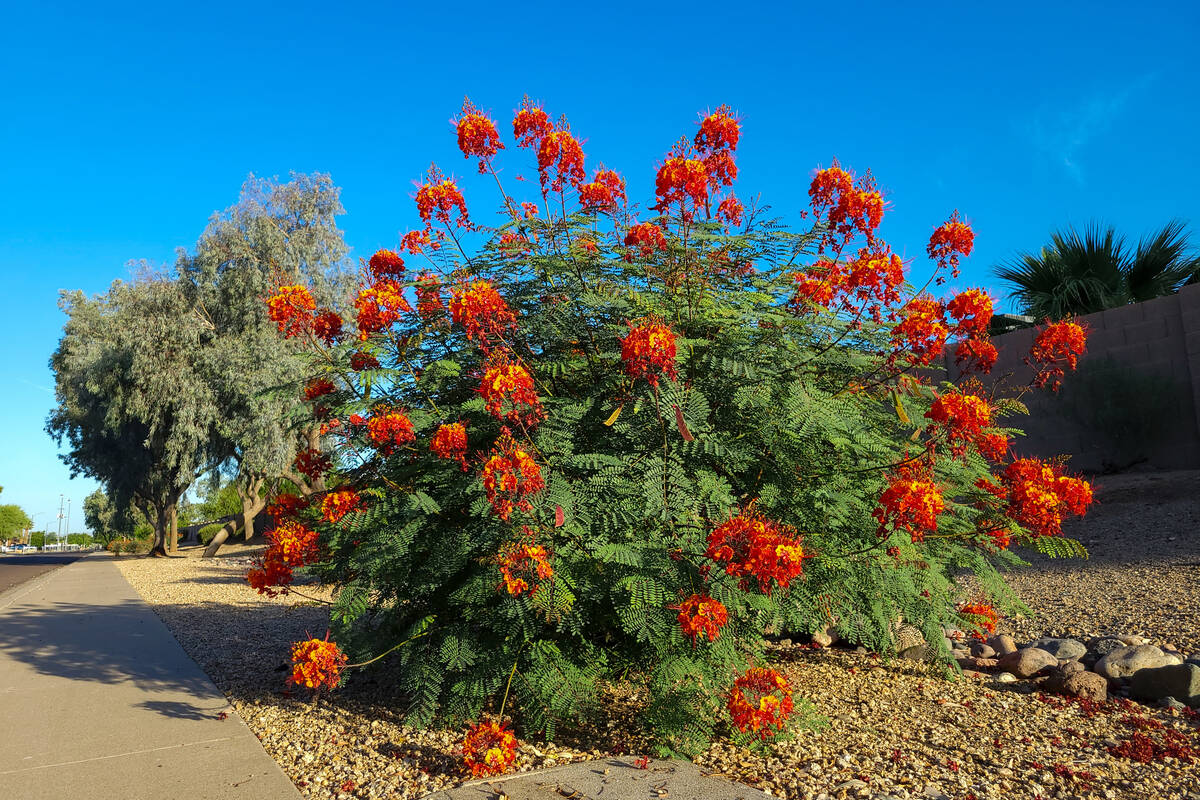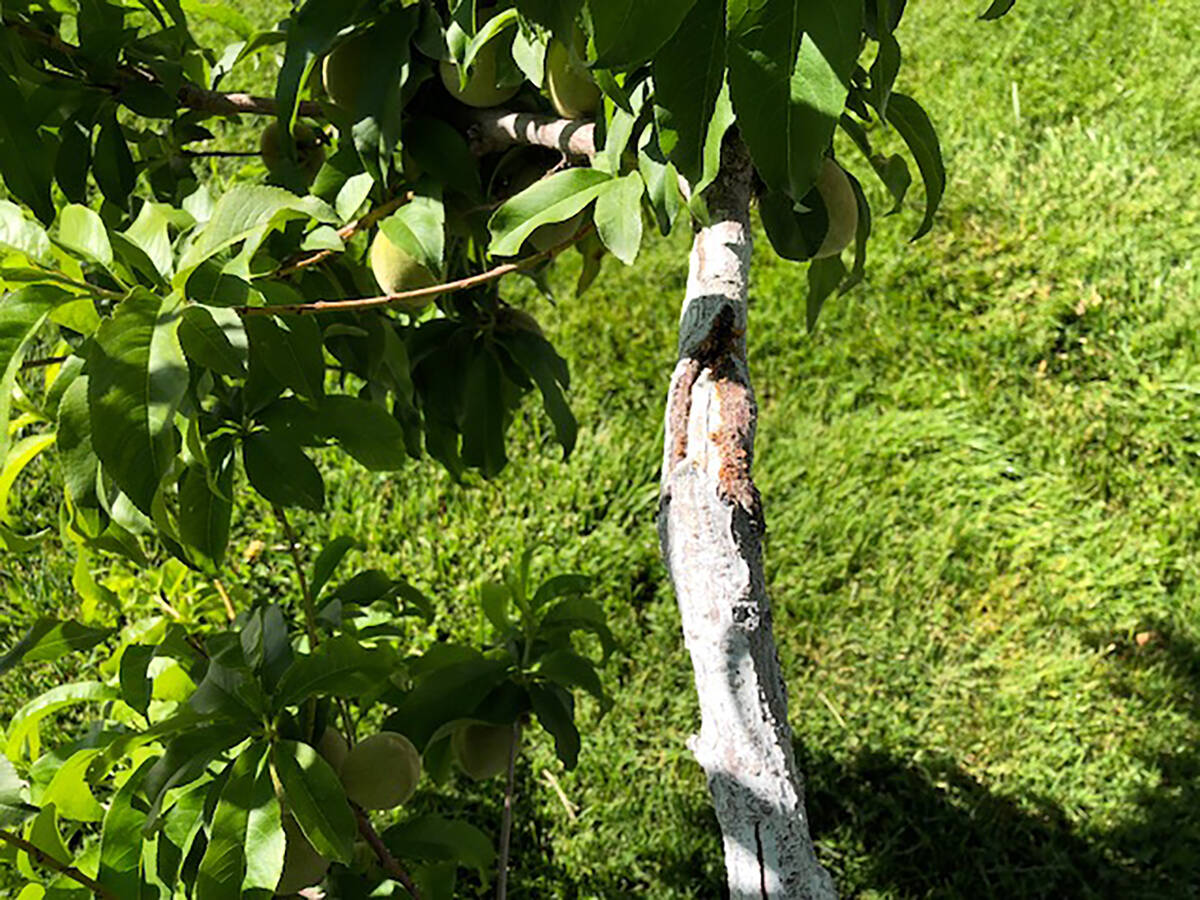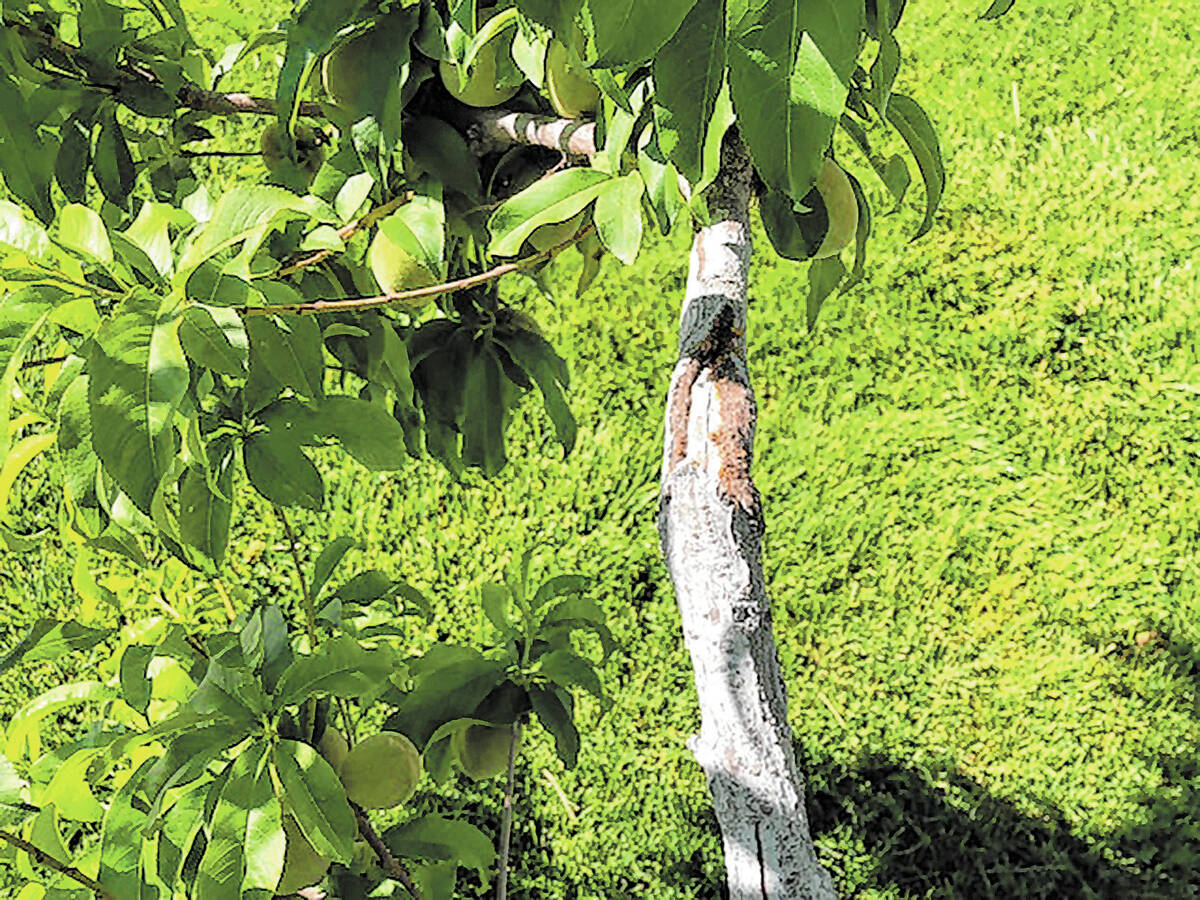Is fruit safe to eat after applying insecticide?
Q: What do you think about a product made by Bonide called Annual Tree &Shrub? Could we use it on a fruit tree to kill bores and eat fruit the same year?
A: Looking at the label’s active ingredients tells me that I am applying Imidacloprid at 1.47 percent. The remaining 98.53 percent is “other ingredients.”
The active ingredient is a small percentage but still must be diluted with water at 1.5 teaspoons of this product per gallon of water to spray it or use it as a soil drench (8 to 30 ounces of this product for each gallon of water depending on the size of the fruit tree).
This product gives season-long control of borers. However, after three weeks of application, whatever remains of this product in the fruit is safe to eat, according to the label.
It is your call. I get worried when it says it gives season-long control of borers but the fruit is safe to eat after 21 days. I prefer telling people to throw the fruit out for one season.
Q: I really want a red bird of paradise in our yard. I killed a new plant last year by overwatering. We have the typical irrigation of watering in the early morning and after 7 p.m. Other than the size of the sprinkler heads we use I don’t know how to water my new plant. Can you help me?
A: This plant died from watering it too often. It may not use a lot of water, but it needs to get watered more often than a desert provides or it will die. It, and its relatives, grow naturally throughout the tropics and subtropics, where water is available more often.
Secondly, the only plants that need daily watering in the summer are very shallow-rooted lawns (tall fescue, for example), most annual vegetables (e.g., tomatoes, eggplant, peppers, etc.) and annual flowers such as petunias and snapdragons. Generally, the larger the plant, the deeper its roots. Woody plants that grow to 3 feet tall have roots that can grow as much as 12 inches deep; woody plants up to 12 feet tall have roots that can grow as much as 18 inches deep, plants that are 25 feet tall have roots that can grow 24 inches deep, etc.
Water according to the 40-30-20-10 rule. If any sized root (12 inches to 3 feet) is divided into fourths, the top fourth consumes the most water, next is the second quarter, then the third, and so on.
When water use is calculated from dead plants, it is found that the top fourth uses about 40 percent of the water, the next quarter uses about 30 percent, then 20 percent and the last approaches 10 percent.
If you want deeper roots, apply water all at once to root depth; let the first quarter use the water and don’t water again until the second quarter is being used. When you water this way, evaporative losses are minimized, and more water gets the roots to grow.
All woody plants (your red bird of paradise is a woody plant) need at least one day a week without any water during the summer. This type of watering allows roots to breathe and develops deeper root growth. Ideally, these plants should be watered when the soil is no longer moist but starting to dry.
Q: My apricot tree is 15 years old. I have emitters around most of the canopy. I gave it fruit tree fertilizer in early spring. This spring, it developed a lot of apricots but then a few weeks later the leaves started turning brown and falling off. I fear my tree is dying. Any suggestions?
A: This is the time of year we see borers finish their nasty work. These borers have been tunneling just under the bark, staying in the tree and are flatheaded borers. It is possible that borers may have been a problem before your tree was 15 years old.
When we see the tree dying it is usually later in the year (usually July or August) when it gets hot. Oftentimes, the tree has an exposed trunk facing west or south. The trunk gets hot, scorches or sunburns and the borers infest the damaged area.
Look for borer damage on the tree trunk where it is exposed to direct sunlight. I would get borer control insecticide containing the active ingredient Imidacloprid and treat it now. Make sure a soil drench is mentioned on the label.
Normally this treatment is done earlier in the year before damage is obvious, around March. But it is worth the treatment now in hopes that the tree will improve.
Your other option is to remove the tree and buy an apricot and plant it in the same hole. I would recommend any apricot on any dwarfing rootstock. Plant any of them in October when it is cooler. If it is borers, they are only in the tree and not the soil.
Q: We have some mature Australian bottle trees for screens, but there’s a lot of leaf litter in the spring and summer. We also have a pool nearby. I would like to create a plan for removing them and replacing them with something tall, shade bearing and evergreen ideally. I was thinking that a compact xylosma trained as a tree would be nice, but I don’t know if they will get tall enough to offer shade.
A: I would hate for you to lose those trees after several years of growth and start over. Your bottle trees may be a bit large for that area (50 to 60 feet tall). If you want to try to keep those trees for privacy (if the leaf drop would not be a problem) then I would do two things: Add more emitters so that you water deeper, and add a thin layer of nutrient-rich compost. Both watering deeper and adding plant nutrients may reduce leaf litter. To add compost you may need to rake the rock back to bare soil. That area should be covered with 2 to 3 inches of rock to reduce evaporation losses and watered in once or twice afterward.
You should not replant in that area until October. Anything planted there (except cactus) will just sit there and not grow until fall anyway. Now is a good time to see if adding nutrient-rich compost stops the leaf drop enough so you can live with it. If you like what it does, that will have to be done every year or two depending on the soil.
Make sure that your thin layer of rich compost is watered in the soil a few inches. Keep it at least 18 inches away from the trunks of trees or it may cause more leaf drop or branch dieback. You may start to see a reduction in leaf drop as the new growth increases. This new growth should reduce leaf drop and be dark green in about three weeks.
If you want to replant that area, consider shoestring acacia or one of the ornamental pistache trees rather than xylosma. Xylosma is bushier and tolerates the heat of summer but is slow growing. You may not find xylosma big enough in the fall at a local nursery; the other two trees you should. Planting them should take 10 years to get the privacy you need.
Bob Morris is a horticulture expert and professor emeritus of UNLV. Visit his blog at xtremehorticulture.blogspot.com. Send questions to Extremehort@aol.com.



















